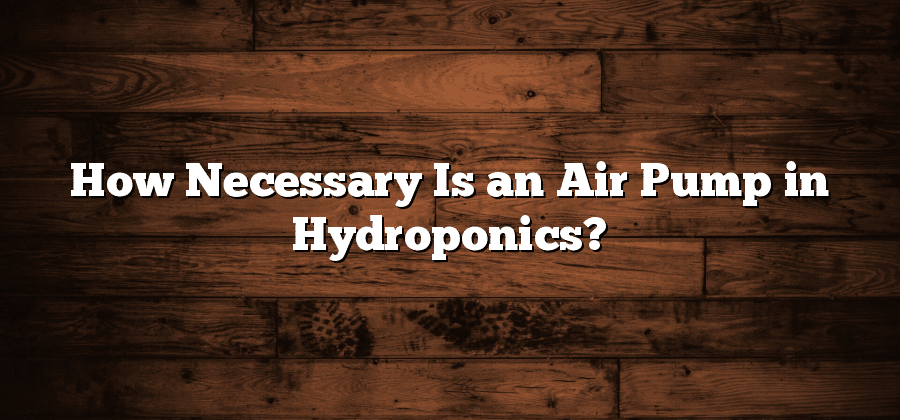Understanding Hydroponic Systems
Hydroponic systems have gained significant popularity in recent years due to their efficiency and ability to grow plants without soil. In a hydroponic system, plants are instead grown in a nutrient-rich water solution, providing them with all the essential minerals they need for healthy growth. This allows for more controlled conditions and maximum nutrient absorption, leading to faster and higher-quality plant growth.
One of the key advantages of hydroponic systems is their ability to optimize resource usage. Unlike traditional soil-based systems, hydroponics eliminates the need for large amounts of water, as the water in the system is recycled and reused. Additionally, hydroponics eliminates the risk of soil-borne diseases, reduces the use of pesticides, and allows for year-round cultivation, regardless of weather conditions. Understanding how hydroponic systems work is crucial for those interested in sustainable and efficient methods of plant cultivation.
The Importance of Oxygen in Hydroponics
Proper oxygenation is crucial for the success of hydroponic systems. The importance of oxygen in hydroponics cannot be overstated, as it directly impacts plant health and growth. In traditional soil-based gardening, plants receive the necessary oxygen through the air pockets within the soil. However, in hydroponics, where plants are grown without the use of soil, it becomes even more critical to provide an adequate supply of oxygen to the plants’ roots.
Oxygen is vital for various physiological processes within plants, including respiration and nutrient uptake. In a hydroponic system, the roots are submerged in a nutrient solution, and without sufficient oxygen, the roots may become waterlogged, leading to root rot, nutrient deficiencies, and ultimately, stunted growth or plant death. Oxygen plays a crucial role in promoting healthy root development, enhancing nutrient absorption, and supporting overall plant vigor. Therefore, ensuring adequate oxygen levels in hydroponic systems is essential for maximizing yields and maintaining plant vitality.
Factors Affecting Oxygen Levels in Hydroponic Systems
Factors Affecting Oxygen Levels in Hydroponic Systems:
One of the key factors that can affect oxygen levels in hydroponic systems is the temperature of the water. When the water temperature rises, the amount of dissolved oxygen decreases. This is because warmer water holds less oxygen compared to colder water. Therefore, it is crucial for hydroponic growers to carefully monitor and control the water temperature to ensure optimal oxygen levels for plant growth.
Another factor that can impact oxygen levels is the type of substrate used in the hydroponic system. Certain substrates, such as rockwool or coconut coir, can hold more water than others. While this can be beneficial for plant hydration, it can also reduce oxygen availability to the root zone. It is important for growers to select substrates that allow for proper drainage and oxygenation to avoid complications like root rot. Additionally, the size and density of the substrate particles also play a role in oxygen levels, with smaller and looser particles typically allowing for better oxygenation.
The Role of Air Pumps in Oxygenation
An air pump plays an integral role in oxygenating a hydroponic system. This device, also known as an aerator or air stone, injects air into the nutrient solution, ensuring optimal oxygen levels for healthy plant growth. The process starts with the air pump drawing in atmospheric air through its intake valve. The air is then compressed and pushed through a tube, which is connected to an air stone or diffuser placed inside the water reservoir. As the air bubbles rise to the surface, they agitate the water, facilitating the exchange of gases between the air and the nutrient solution.
The main function of the air pump is to supply a consistent and sufficient flow of oxygen to the roots of the plants. In hydroponic systems, where plants are grown without soil, oxygen levels are crucial for nutrient absorption and root development. The oxygen dissolved in the nutrient solution provides essential air to the roots, allowing them to respire and carry out metabolic processes effectively. Without adequate oxygenation, the roots can become deprived of oxygen, leading to root rot, nutrient deficiencies, and stunted growth. The air pump ensures that the plants receive the necessary oxygen supply, promoting healthy and vigorous growth in a hydroponic system.
Alternatives to Air Pumps in Hydroponics
One alternative to using air pumps in hydroponics is the implementation of water agitation methods. These methods involve creating movement and turbulence in the water reservoir without relying on mechanical devices like air pumps. One common technique is using a water paddle or a propeller to agitate the water manually. By periodically stirring the water, you can introduce oxygen into the system and prevent stagnation. This method is often straightforward to implement and requires minimal investment in equipment.
Another alternative is the use of water pumps with built-in venturis. A venturi is a device that creates a vacuum effect, which draws in air from the environment and mixes it with the water flow. By strategically placing a venturi in the water circulation system, you can effectively oxygenate the water without the need for an air pump. This method can be a cost-effective solution, especially if you already have a water pump in your hydroponic setup. However, it is crucial to ensure proper sizing and placement of the venturi to achieve adequate oxygenation.






